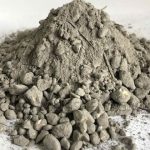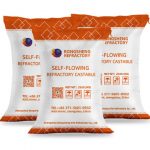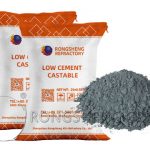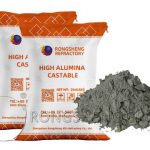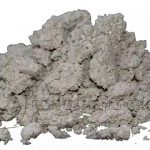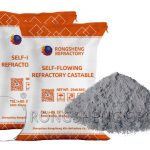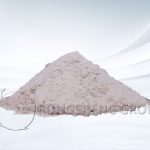Monolithic refractories are primarily used in irregularly shaped or deformed areas of new dry-process cement kilns, such as the preheating system, kiln tail, kiln head, coal injection nozzles, tertiary air ducts, coolers, and waste heat power generation. Monolithic refractories come in a wide variety of types, with significantly varying performance. Construction and maintenance significantly impact their service life. To improve cement kiln operation, refractory engineers must be familiar with the properties of various monolithic refractories and master the techniques for selecting and using them under different conditions.
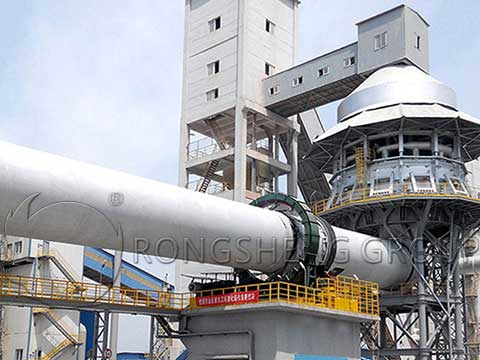
Key Points about Monolithic Refractories
- First, the bonding method.
- Second, the complex reactions within the binder, between the binder and the binder, and between the binder and the refractory materials after heating.
- Third, the even more complex physical and chemical interactions between the monolithic refractories and the kiln charge, kiln gas, anchors, and kiln body.
Bonds occur within the matrix of the monolithic refractories, and between the matrix and the aggregate, providing the ability to resist external forces without breaking. Generally, monolithic refractories can be bonded using three methods: cement bonding, chemical bonding, and cohesive bonding. In a narrow sense, cement refers to calcium aluminate cement. Cement bonding is achieved through cement hydration. Hydration is a chemical reaction in which a solid substance reacts with water to form a solid, hydrated substance.
Cement Bonding
Cement bonding includes the following three types:
- ① Bonding resulting from direct physical and chemical reactions between cement hydration products.
- ② Bonding resulting from reactions between hydration products and highly reactive substances (such as silica sol).
- ③ Bonding resulting from physical and chemical reactions between hydration products and the surfaces of pozzolanic substances such as silica fume, calcined kaolin powder, and calcined alumina powder.
Chemical Bonding
Chemical bonding is achieved through chemical reactions involving the binder. However, these chemical reactions do not include reactions between hydratable substances and water, or at least not primarily hydration. Otherwise, they should be classified as hydration bonds. Generally, there are three common types of chemical bonding:
- ① Bonding resulting from the reaction between the binder and the refractory.
- ② Bonding resulting from the reaction between the binder and the hardener.
- ③ Bonding resulting from a combination of the above two methods.
For example, waterglass bonding can be achieved through the reaction between the binder and the refractory, as in waterglass magnesium bricks. It can also be achieved through the reaction between the binder and the hardener (waterglass + sodium fluorosilicate). Phosphate bonding can be achieved through the reaction between the binder and the refractory, as in phosphate bricks. It can also be achieved through a combination of bonds, such as in phosphate-bonded monolithic refractory materials made with phosphoric acid as the binder and cement as the setting accelerator.
Cohesive bonding
Cohesive bonding refers to the bonding produced by the agglomeration of micropowders. Cohesive bonding has two key elements:
- ① Achieving the transition from dispersed micropowders to agglomerated micropowders requires a delayed-acting hardener.
- ② Increasing the solid phase volume, reducing the liquid phase volume, reducing porosity, and improving the adhesion between micropowders. This is more or less related to cement bonding.
Broadly speaking, cement is a powdered substance that undergoes hydration reactions, thereby creating bonds or strength through direct and indirect physical and chemical reactions. For example, barium aluminate (BaO·Al₂O₃) is a specialty refractory cement. Another example is ρ-AUOs, which is also a specialty refractory cement. The MgO-SiO₂-H₂O bond is considered a cohesive bond. However, this bond requires the hydration of MgO to change the properties of the liquid phase to produce coagulation, the interaction of MgO hydrates with the surface of silica fume to produce hardening, and the physical and chemical reactions between MgO and silica fume during heating to form substances such as M₂S. Therefore, the MgO-SiO₂-H₂O bond is essentially a cement bond.
During heating, a complex series of physical and chemical reactions occur in monolithic refractory materials. Common physical and chemical reactions, such as those in ultra-low cement bonded refractory castables, include the following:
- ① Removal of free water.
- ② Removal of bound water from hydrates.
- ③ Transformation of hydrates.
- ④ Reaction of dehydrated hydrates with silica fume.
- ⑤ Reaction of silica fume with alumina powder.
- ⑥ Mullite crystals form from the intermediate phase under the action of mullite nuclei.
- ⑦ Formation of a well-developed new bonded phase of mullite and anorthite.
During use, ultra-low cement castables are subjected to extremely complex workloads, leading to gradual deterioration and damage. Several factors contribute to this degradation:
- First, the radiation and convection heat transfer from high-temperature kiln gases to the refractory materials.
- Second, the impact and abrasion caused by the hot kiln charge.
- Third, erosion caused by CaO and other substances in the kiln charge.
- Fourth, the intrusion, condensation, and erosion of volatile components such as K₂O in the kiln gas into the refractory materials.
- Fifth, thermal shock damage caused by fluctuating kiln temperatures.
- Sixth, differences in temperature and thermal expansion coefficients create significant stresses between the monolithic refractory materials, anchors, and the kiln body, leading to damage to the kiln lining or pullout of anchors.
- Seventh, oxidation and corrosion damage to anchors can cause lining collapse.
Monolithic refractory materials may appear simple, but in reality, they are highly heterogeneous, multi-layered composite materials. The formation, development, and bonding of their microstructure during manufacturing are complex. During use, the question of how monolithic refractories can withstand the damage of high temperatures, erosion, thermal shock, and mechanical stress, thereby achieving a longer service life, presents a more complex problem.
Therefore, selecting and using monolithic refractories effectively is not easy.
- First, one must be familiar with the properties of various monolithic refractories.
- Second, one must understand the primary damage mechanisms in the areas of use.
- Third, one must select and use appropriate refractory materials, leveraging their strengths and minimizing their weaknesses.
- Finally, one must carefully observe and analyze the results of use to identify existing problems and propose solutions.
In short, a strong understanding of refractory theory and the ability to solve practical problems, particularly those that have long been elusive within the industry or develop new inventions, is essential to establishing a firm foothold in the refractory community.

